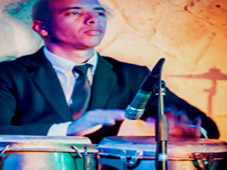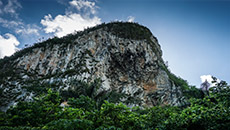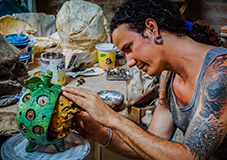Christopher Columbus discovered the island of Cuba on October 27, 1492, during his initial voyage to find a westerly route to the Orient. As gathered from his chronicles, the exotic beauty of the island left him absolutely spell-bound. In his essay about the discovery of Cuba, he passionately describes it as “ the most beautiful land human eyes have ever seen”.
Before the Europeans arrived, Cuba was inhabited by three different cultures: the Ciboneyes, the Guanahatabeyes and the Tainos. The Tainos were the most advanced. They were fishermen, hunters, and agriculturists. They grew maize (corn), yams, beans, squash, yucca, cotton and tobacco. They were skilled in woodwork and pottery. By the time the Spanish arrived, about 100 000 native Indians lived peacefully in the island.
Cuba's size and diversity of landscape no doubt convinced Columbus that he had indeed found Asia. It wasn’t until 1508 that Sebastián de Ocampo, another Spanish navigator and explorer, circumnavigated Cuba, proving that it was an island.
In 1511, Diego Velázquez de Cuéllar set out with three ships and an army of 300 men from La Espanola (Hispaniola), east of Cuba, with orders from Spain to conquer the island. The new settlers were to be greeted with stiff resistance from the local Taíno population under the leadership of Hatuey, a cacique ( chieftain) who had fled to Cuba from La Espanola to escape the brutalities of Spanish rule on that island. After a prolonged resistance, Hatuey was captured and burnt alive, and within three years the Spanish had gained control of the island.
Diego Velázquez established seven main settlements in the new colony: Baracoa, Bayamo, Santiago, Puerto Principe, Trinidad, Sancti Spiritus and Havana.
Due to its favorable geographic location at the mouth of Gulf of Mexico, Cuba served as a transit point for Spanish treasure fleets carrying the wealth of the colonies to Spain. Havana’s superb harbor with an easy access to the Gulf Stream soon turned the village into the capital of the New World. These riches attracted the attention of pirates such as Frenchman Jacques de Sores who attacked Havana in 1555.
By the mid of the 16th century slavery, malnutrition, diseases, suicide and overwork had drastically reduced the native population of Cuba. This caused the Spanish to rely on the African slaves.
Economically, there was little gold in Cuba, but agriculture more than made up for it. Cattle raising and tobacco became the most important industries. Sugar cane was introduced to Cuba on Columbus' second voyage but the expansion of sugar cultivation was limited by a lack of slaves.
By the second half of the 18th century, Spain became involved in the Seven Years’ War between Britain and France. In August 1762 the British captured Havana and held the island for eleven months. In July 1763 Cuba was returned to Spain in exchange for Florida. The British occupation and the temporary lifting of Spanish restrictions showed the local landowning class the economic potential of trading their commodities with England and North America.
Towards the end of the 18th century, Cuba began its transformation into a slave plantation society. After the French Revolution, there were slave uprisings in the nearby colony of Haiti. French planters fled what had been the most profitable colony in the Caribbean and settled across the water in Cuba, bringing their expertise with them.
They set up coffee plantations and modernized the Cuban sugar industry. Cuba soon became a major sugar exporter and, after 1793, slaves were imported in huge numbers to work the plantations. The island was under absolute military control with a colonial elite that made its money principally from sugar.
By the mid of the 19th century, Cuba was producing about a third of the world’s sugar and was heavily dependent on African slaves to do so. Diplomatic pressure from Britain forced Spain to agree to halt the slave trade but the import of African slaves continued. It is estimated that almost 400,000 Africans were brought to the island between 1835 and 1864. Slavery was not abolished until 1886.

The Fight for Independence
The first large-scale war for Cuban independence began on October 10, 1868 with a historic proclamation known as the Grito de Yara (the Cry of Yara). The rebellion was lead by landowner Carlos Manuel de Céspedes. At his sugar plantation La Demajagua in the eastern province of Oriente, Céspedes freed his slaves and declared war again Spain. This was the beginning of the so called Ten Years War.
The uprising was supported by other local landowners and continued to spread throughout the eastern region of Cuba. By the end of October, the rebel army had grown to 12,000 men.
The first important city captured by the rebels was Bayamo. On October 20, ten days after the beginning of the war, Bayamo was proclaimed capital of the Republic in Arms and Cuba's National Anthem was sung there for the first time.
Within the first year of the war a young man named Antonio Maceo rose to the unprecedented rank of lieutenant colonel of the Liberating Army and captured the admiration and imagination of black and white Cubans alike.
Maximo Gomez, a former cavalry officer for the Spanish Army in the Dominican Republic, with his extraordinary military skills, taught the Cuban forces what would be their most lethal tactic: the
machete charge. Gomez became one of the most important leaders of the independence movement.
In 1878, the Convention of Zanjón brought the war to an end. The agreement granted freedom to all slaves who fought in the war, but slavery was not abolished and Cuba remained under Spanish rule.
During the next 17 years, tension between the people of Cuba and the Spanish government continued. It is during this period when U.S. capital began flowing into the island, mostly into the sugar and tobacco industries and mining. By 1895 investments reached 50 million U.S. dollars. Although Cuba remained Spanish politically, economically it started to depend on the U.S.
On February 24, 1895, a new independence war was started lead by the young poet and revolutionary, José Martí. He was joined by Antonio Maceo, Maximo Gomez and Calixto Garcia, all veterans from the previous war. On May the same year, Marti was shot and killed in a brief encounter with the Spanish army. He later became Cuba’s National Hero.
Unwilling to repeat the mistakes of the first war of independence, Gomez and Maceo began an invasion to the western provinces. In ninety days and 78 marches, the invading army went from Baraguá (at the eastern tip of the island) to Mantua (the western end) traveling a total of 1,696 kilometers and fighting 27 battles.
The USA was now concerned for its investments in Cuba and was considering its strategic interests within the region. In January 1898 the US battleship Maine was sent to Havana to protect US citizens living in the island. When the ship mysteriously exploded in Havana harbor on 15 February 1898, killing 266 American sailors, this was made a pretext for declaring war on Spain. The American cry of the hour became Remember the Maine!
Hostilities started hours after the declaration of war when a US contingent under Admiral William T. Sampson blockaded several Cuban ports. The Americans decided to invade Cuba and to start in Oriente where the Cubans had almost absolute control and were able to co-operate. The first US objective was to capture the city of Santiago de Cuba.
Future US president Theodore Roosevelt personally led the celebrated charge of the ‘Rough Riders’ up San Juan Hill and claimed a great victory. The port of Santiago became the main target of naval operations. The Battle of Santiago de Cuba, on 3 July 1898, was the largest naval engagement during the Spanish-American War resulting in the destruction of the Spanish Caribbean Squadron.
In December 1898 a peace treaty was signed in Paris by the Spanish and the Americans. The Cubans were excluded.
The Spanish troops left the island in December 1898 and an American military government was immediately proclaimed in Cuba. After many years of struggle, the Cuban people had gained independence from Spain but found themselves under US military occupation for the next four years.

The Republic of Cuba was proclaimed on 20 May 1902 and the Government was handed over to its first president, Tomás Estrada Palma.
Although the U.S. forces withdrew from Cuba, the Americans retained almost total control over the Island. As a precondition to Cuba’s independence the US had demanded that the Platt Amendment be approved fully and without changes by the Cuban Constituent Assembly as an appendix to the new constitution. Under this amendment the US kept the right to intervene in Cuban domestic affairs "to preserve its independence".
The amendment also allowed the United States to establish a naval base at the mouth of the Guantánamo Bay which they occupy to this day.
By the 1920’s US companies owned two thirds of Cuba’s farmland and most of its mines. A series of weak, corrupt, dependant governments ruled Cuba during the next decades.
In 1925 Gerardo Machado was elected president of Cuba on a wave of popularity. However, a drastic fall in sugar prices in the late 1920s led to protests which he forcefully repressed. In 1928 through bribes and threats he ‘persuaded’ Congress to grant him a second term of office, which was greeted with strikes and protests from students, the middle classes and labor unions. Machado's police forces arrested students and opposition leaders, whom they tortured or killed.
The United States, attempting to find a peaceful solution to Cuba's political situation, sent special envoy Sumner Welles to mediate between government and opposition. Welles's efforts finally led to a general strike and an army revolt which forced Machado to leave the country on Aug. 12, 1933.
Carlos M. Céspedes , the son of Cuba's legendary leader, took over as provisional president. Shortly later, on 5 September 1933, a revolt of non-commissioned officers including sergeant Fulgencio Batista, deposed the government and installed a five-member committee with Ramón Grau San Martín as president.
One of the appointed Ministers of the new government was Antonio Guiteras who implemented important radical changes in the country. He sets up an 8-hour working day, establishes a Department of Labor, grants peasants the right to own the land they were farming, reduces electricity rates by 40 percent, and nationalizes the American-owned Electric Company. US Ambassador Sumner Welles described these reforms as "communistic" and "irresponsible".
The Grau-Guiteras government only lasted 100 days. Fulgencio Batista, by then colonel, staged a coup and held power through presidential puppets until he was elected president himself in 1940. In the same year a new Constitution was passed, which included universal suffrage and benefits for workers such as a minimum wage, pensions, social insurance and an eight-hour day.
In 1944 Ramón Grau San Martín representing the Partido Autentico (Authentic Party) was elected President. His administration coincided with the end of World War II, and he inherited an economic boom as sugar production and prices rose. He inaugurated a program of public works and school constructions. Social security benefits were increased, and economic development and agricultural production were encouraged. But increased prosperity brought increased corruption. Grau was followed into the presidency by Carlos Prío Socarrás, who held office from 1948 to 1952, a term which was even more corrupt and depraved.
Eduardo Chibás was at the time the leader of the Partido Ortodoxo (Orthodox Party), a liberal democratic group, who was widely expected to win in 1952 on an anticorruption platform. On the 10th of March of 1952, just three months before the scheduled election date, Batista staged a military coup and quickly established a brutal and repressive dictatorship.

By the 1950’s over half of Cuba’s land, industry and essential services were in foreign hands.
Since the late 1930s, American mobsters had been involved in Cuban gaming. In 1946, Lucky Luciano gathered America’s top gangsters – as well as honored guest Frank Sinatra – at Havana’s Hotel Nacional for his infamous Mafia Summit. In the 1950’s more than twenty new hotels were built and gambling establishments increased. In 1952, Meyer Lansky became Batista’s official advisor of gambling reform. In that capacity Lansky controlled the majority of casino gambling on the island, along with Santo Trafficante. The Presidente and the Hotel Capri opened their casinos in 1957. Other casinos were installed in Havana at the Nacional, Plaza, Seville-Biltmore, Deauville, and Comodoro hotels; in Cienfuegos at Jagua motel; in Varadero at the Internacional; and on the Isle of Pines at the Colony hotel. Newspapers observed that Havana was bidding for the title of the
Las Vegas of Latin America.
In reaction to Batista's oppressive and corrupted government, new revolutionary movements started to spring across the Island. These were formed by student and labor organizations, intellectuals, the middle-class, farmers and peasants.
On 26 July 1953 a young lawyer by the name of Fidel Castro led a historic attack on the Moncada Barracks in Santiago de Cuba, the second most important military base in the country at that time. The attack failed and about 55 rebels were captured, tortured and murdered. Although Fidel and his brother Raúl escaped, they were later captured and put on trial. Fidel used the occasion to make an impassioned speech, denouncing the crimes of Batista’s government and its illegitimacy, and the need for radical economic and social changes in Cuba. The speech is known in Cuban history for its final phrase,
History will absolve me.
Fidel was sentenced to 15 years, but was released as part of an amnesty in 1955. He departed for Mexico where he met Ernesto "Che" Guevara. While in Mexico, he organized the 26th of July Movement with the goal of overthrowing Batista. By the end of November of the following year, Fidel — along with Che Guevara and 81 other rebels — set sail in the yacht Granma in another attempt to overthrow Batista. On landing , on December 2, the rebels were surprised by an ambush. The 15 survivors — including Fidel, Raul and Che — fled in three separate groups into the impenetrable forests of the Sierra Maestra where they regrouped, reorganized and launched guerrilla attacks that soon gained the support of the vast majority of Cuba’s farmers, urban workers and students. Just over two years later, the Rebel Army defeated Batista’s forces. On January 1, 1959, the dictator fled the island.
By then United States companies owned about 40 percent of the Cuban sugar lands, almost all the cattle ranches, 90 percent of the mines and mineral concessions, 80 percent of the utilities, practically all the oil industry, and supplied two-thirds of Cuba's imports.
The Rebel Army entered Havana on 8 January 1959. Shortly afterward, a liberal lawyer, Dr Manuel Urrutia Lleó became president. Disagreements within the government culminated in Urrutia's resignation in July 1959. He was replaced by Osvaldo Dorticós Torrado, who served as president until 1976. Fidel Castro became prime minister in February 1959, succeeding José Miró in that post.
Among the first acts of the revolutionary government were cuts in rents and electricity and telephone rates, and the closing of the mafia-controlled gambling industry. State education was immeasurably expanded and a national literacy campaign was launched.
In May 1959, the First Agrarian Reform Laws were launched which redistributed land mostly owned by US companies to small farmers and landless rural workers and banned land ownership by foreigners. American displeasure with these measures was clear and the reaction of the U.S. government was swift. Sugar purchases from Cuba were stopped and were accompanied by other actions aimed to undermine the Revolutionary government's programs. In response, Cuba nationalized American-owned industries, mostly sugar mills. When the U.S. petroleum companies threatened to cut-off oil supplies and paralyze the country, Cuba started purchasing oil from the Soviet Union which the U.S.-owned refineries refused to process. As a result Texaco, Esso, and Shell oil refineries were nationalized. All foreign banks were also nationalized including the First National City Bank of New York, the First National Bank of Boston and the Chase Manhattan Bank.
As the U.S. increased pressure on Cuba, the government of the Revolution sought, and found, new allies in the Soviet Union. By 1960 the USSR had became the main purchaser of Cuban sugar and its most important supplier of petroleum products. On October 19 of the same year the U.S. places a partial trade embargo on Cuba, and ended diplomatic relations with the neighbor island at the beginning of 1961.
As the newly established Cuban Revolution drifted towards a Marxist-Leninist political system, upper class and professional Cubans were leaving the country in droves. In December 1959 Cubans began to send their children to the U.S., afraid of "losing them to communism." Over 14,000 Cuban children who went to the U.S. under this program are known as the Peter Pan kids. At the same time, various newspapers in the U.S., Mexico, and Latin America were running articles warning of an imminent U.S. attack on Cuba.
The recently elected Kennedy administration denied emphatically that an attack on Cuba was planned, but in 1961 an attack took place at Bay of Pigs. The famous aggression began on April 14 when some 1400 Cuban émigrés trained by the CIA in Florida and Guatemala set sail in six ships from Puerto Cabeza, Nicaragua. On 15 April, planes from Nicaragua bombed several Cuban airfields in an attempt to wipe out the air force. Seven Cuban airmen were killed in the raid, and at their funeral the next day, Fidel Castro addressed a mass rally in Havana and proclaimed the socialist nature of the Cuban revolution for the first time. On 17 April the invasion flotilla landed at Playa Girón and Playa Larga in the Bahía de Cochinos (Bay of Pigs), but the men were stranded on the beaches when the Cuban air force attacked their supply ships. Two hundred were killed and the rest surrendered within three days. A total of 1197 men were captured and eventually returned to the USA in exchange for US$53 million in food and medicine.
The US reaction was to isolate Cuba, with a full trade embargo and heavy pressure on other American countries to sever diplomatic relations. Cuba was expelled from the Organization of American States (OAS) and the OAS imposed economic sanctions. However, Canada and Mexico refused to bow to American pressure and maintained relations.
In April 1962, Soviet President Kruschev decided to install missiles in Cuba, which would be capable of striking anywhere in the USA. In October, President JF Kennedy ordered Soviet ships heading for Cuba to be stopped and searched for missiles in international waters. This lead to the Cuban Missile Crisis, which brought the world to the brink of nuclear war. Kennedy demanded the withdrawal of Soviet troops and arms from Cuba and imposed a naval blockade. Without consulting Castro and without his knowledge, Kruschev eventually agreed to have the missiles dismantled and withdrawn on condition that the West would guarantee a policy of non-aggression towards Cuba. In November, Kennedy suspended the naval blockade but reiterated US support for political and economic aggression towards Cuba.
The early 60s also witnessed the creation of several organizations and institutions, such as the Federation of Cuban Women (FMC), the Committees for the Defense of the Revolution (CDR), the Union of Cuban Pioneers (OPJM) and the Young Communist League (UJC), geared in part to deepen the roots of the Revolution among its people and throughout the country.
From the very beginning the Cuban Revolution defined itself as internationalist. Although still a third world country itself Cuba supported African, Central American and Asian countries in the field of military, health and education.

During the second decade of the Revolution, Cuba became increasingly dependent on Soviet markets and military aid. In 1972 the island becomes a member of the Soviet Union's trade association, the Council for Mutual Economic Assistance. The island’s economic and political institutions are increasingly modeled on those of the Soviet Union.
By the mid-1980’s the inefficiencies of the economic system had become obvious and Cuba began a process known as the ‘rectification of errors’ which attempted to reduce bureaucracy and allow more decision-making at local levels.
With the 1989 collapse of the centrally planned economies of Eastern Europe and the 1991 dissolution of the Soviet Union, Cuba lost both its major markets and its primary source of foreign assistance. As a result, the Cuban economy collapsed, and the full effect of the U.S. embargo became evident. The loss of cheap Soviet oil also triggered a Cuban energy crisis. Cuban foreign trade fell 75 percent, and economic output fell 50 percent.
The Cuban Government responded to this economic crisis with a major program of reforms. Initiating market-oriented reforms, allowing foreign investment, and promoting a diversified export program have set the stage for Cuba’s economic recovery.
In 1990, Cuba announced a “Special Period in Peacetime” economic austerity program to counter the loss of Soviet support. The program rationed food, fuel, and electricity and gave priority to domestic food production, development of tourism, and biotechnology.
In 1993, the Cuban Government established a new form of cooperative— the Basic Unit of Cooperative Production, or UBPC— initiating the process of breaking up large state farms. While land title remains with the state, these cooperatives have the right to use the land and make production and resource decisions.
In 1994, the Government established farmers’ markets, where producers’ surplus production can be sold at free-market prices. Cuba also fostered the establishment of foreign “economic associations” (joint ventures, international contracts) to allow increased foreign investment in the tourism, mining, telecommunications, manufacturing, and construction sectors of the Cuban economy.
Since the initiation of reforms, GDP growth, consumption, and production are showing signs of recovery. Major growth areas in the Cuban economy are tourism, nickel and ore production, fisheries, manufacturing, tobacco, and vegetables.
In February 2008, Fidel Castro announced his resignation as President of Cuba and on 24 February his brother Raúl was elected as the new President.

27 Oct 1492 - Christopher Columbus lands in Cuba and claims it for Spain.
1511 - Spanish conquest begins under the leadership of Diego de Velazquez.
1522 - After the decimation of the indigenous population, colonial landowners bring in African slaves to work the fields. The first of the slave ships arrives, with many more to follow.
1762 - Havana is captured by a British force led by Admiral George Pocock and Lord Albemarle.
1763 - Havana is returned to Spain in exchange for Florida.
1853 - José Martí, Cuba’s national hero is born.
10 Oct 1868 - The Ten Years War over independence from Spain starts.
1878 – End of the Ten Years War. Cuba remained under Spanish rule.
1886 - Slavery is abolished.
24 Feb 1895 - Jose Marti leads a second war of independence.
May 19 1895 - José Martí is killed at Dos Ríos in eastern Cuba. He is 42 years old.
15 Feb 1898 - The USS Maine explodes in Havana's harbor. The U.S. blames Spain, and so begins the Spanish-American War.
10 Dec 1898 - Treaty of Paris is signed. Spain loses their colonies in Guam, Puerto Rico and the Philippines to the United States. Cuba gains independence from Spain. The United States maintains military control over the island.
1901 – The Platt Amendment is added to the Cuban Constitution. The United States are allowed military bases on the island, and may intervene militarily whenever they deem necessary.
20 May 1902 - Cuba becomes an independent republic with Tomas Estrada Palma as its president; however, the Platt Amendment keeps the island under US protection and gives the US the right to intervene in Cuban affairs.
1906-09 – Estrada Palma resigns and the US occupies Cuba following a rebellion led by Jose Miguel Gomez.
1909 - Jose Miguel Gomez becomes president following elections supervised by the US, but is soon tarred by corruption.
1912 - US forces return to Cuba to help put down black protests against discrimination.
1925 - Gerardo Machado becomes president. His regime is one of the most corrupt and exploitative in the island's political history.
13 Aug 1926 - Fidel Castro is born.
14 Jun 1928 - Ernesto "Che" Guevara is born in Argentina.
1933 - Machado's government is overthrown.
1940 - Fulgencio Batista is elected president. He remains president for four years.
Oct 1945 - Fidel Castro enters law school at the University of Havana.
10 Mar 1952 - Carlos Prío's government is overthrown by Fulgencio Batista's military coup. Batista becomes dictator. This government is openly supported by the United States.
26 July 1953 - Fidel Castro leads an unsuccessful revolt against the Batista regime.
2 December 1956 - Castro lands in eastern Cuba from Mexico and takes to the Sierra Maestra mountains where, aided by Ernesto "Che" Guevara, he wages a guerrilla war.
1 Jan 1959 – Triumph of the Cuban Revolution. Fidel Castro overthrows Batista after months of guerilla warfare. He sets up a provisional government. Batista flees the country.
17 Apr 1961 - The Bay of Pigs invasion. Cuban exiles attempt to invade the island and overthrow Castro's regime. The U.S. government backs the botched mission. The Cuban army easily defeats the rebels, many of whom are killed during the insurrection.
January 1962 – Under US pressure Cuba was expelled from the Organization of American States (OAS). Canada and Mexico decided to maintain relations.
October 1962 - Cuban missile crisis ignites when, fearing a US invasion, Castro agrees to allow the USSR to deploy nuclear missiles on the island. The crisis was subsequently resolved when the USSR agreed to remove the missiles in return for the withdrawal of US nuclear missiles from Turkey.
9 Oct 1967 - Che Guevara is executed by government troops in Bolivia.
1972 - Cuba becomes a full member of the Soviet-based Council for Mutual Economic Assistance.
1976 - Canadian Prime Minister Pierre Trudeau visits Cuba.
1990 - Cuba endures a massive recession due to the collapse of the U.S.S.R.
1994 - Cuba signs an agreement with the US according to which the US agrees to admit 20,000 Cubans a year in return for Cuba halting the exodus of refugees.
1998 - Pope John Paul II visits Cuba.
1999 November - Cuban child Elian Gonzalez is picked up off the Florida coast after the boat in which his mother, stepfather and others had tried to escape to the US capsized. A huge campaign by Miami-based Cuban exiles begins with the aim of preventing Elian from rejoining his father in Cuba and of making him stay with relatives in Miami.
2000 June - Elian allowed to rejoin his father in Cuba after prolonged court battles.
2000 October - US House of Representatives approves the sale of food and medicines to Cuba.
2002 January - Prisoners taken during US-led action in Afghanistan are flown into Guantanamo Bay for interrogation as al-Qaeda suspects.
2002 May - Former US president Jimmy Carter makes a goodwill visit which includes a tour of scientific centres, in response to US allegations about biological weapons. Carter is the first former or serving US president to visit Cuba since the 1959 revolution.
2002 June - National Assembly amends the constitution to make socialist system of government permanent and untouchable.
2006 July - President Fidel Castro undergoes gastric surgery and temporarily hands over control of the government to his brother, Raul.
2008 February - Raul Castro takes over as president, days after Fidel announces his retirement.
2009 March - US Congress votes to lift Bush Administration restrictions on Cuban-Americans visiting Havana and sending back money.
2009 June - Organization of American States (OAS) votes to lift ban on Cuban membership imposed in 1962. Cuba welcomes decision, but says it has no plans to rejoin.
2009 July - Cuba signs agreement with Russia allowing oil exploration in Cuban waters of Gulf of Mexico.



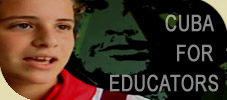
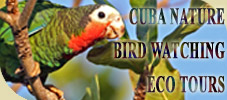
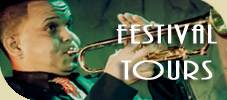
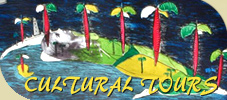
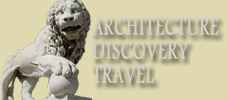

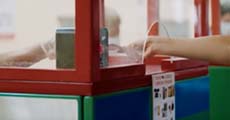 Authentic Cuba Travel® Lifetime Deposits offers any of our tour participants forced to delay a departure to retain their deposit for use at a later date at no extra charge and NO QUESTIONS ASKED.
Authentic Cuba Travel® Lifetime Deposits offers any of our tour participants forced to delay a departure to retain their deposit for use at a later date at no extra charge and NO QUESTIONS ASKED.
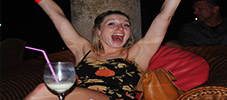
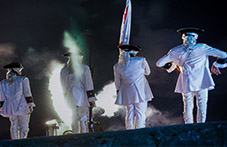 For Authentic Cuba Travel® safety always comes first. Constant on-tour safety expertise & on-site assistance. Your safety is our top priority.
For Authentic Cuba Travel® safety always comes first. Constant on-tour safety expertise & on-site assistance. Your safety is our top priority.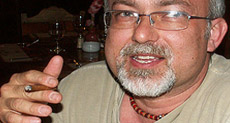 Nobody knows Cuba as Authentic Cuba Travel®! Our staff is fluent in English and Spanish and have lived and worked in Cuba Travel Industry for over 10 years minimun. Guarantee!
Nobody knows Cuba as Authentic Cuba Travel®! Our staff is fluent in English and Spanish and have lived and worked in Cuba Travel Industry for over 10 years minimun. Guarantee!
 Sustainable tourism is where our Cuba tour participants can enjoy their holiday and at the same time respect the authentic culture of local people and also respect the environment.
Sustainable tourism is where our Cuba tour participants can enjoy their holiday and at the same time respect the authentic culture of local people and also respect the environment.
